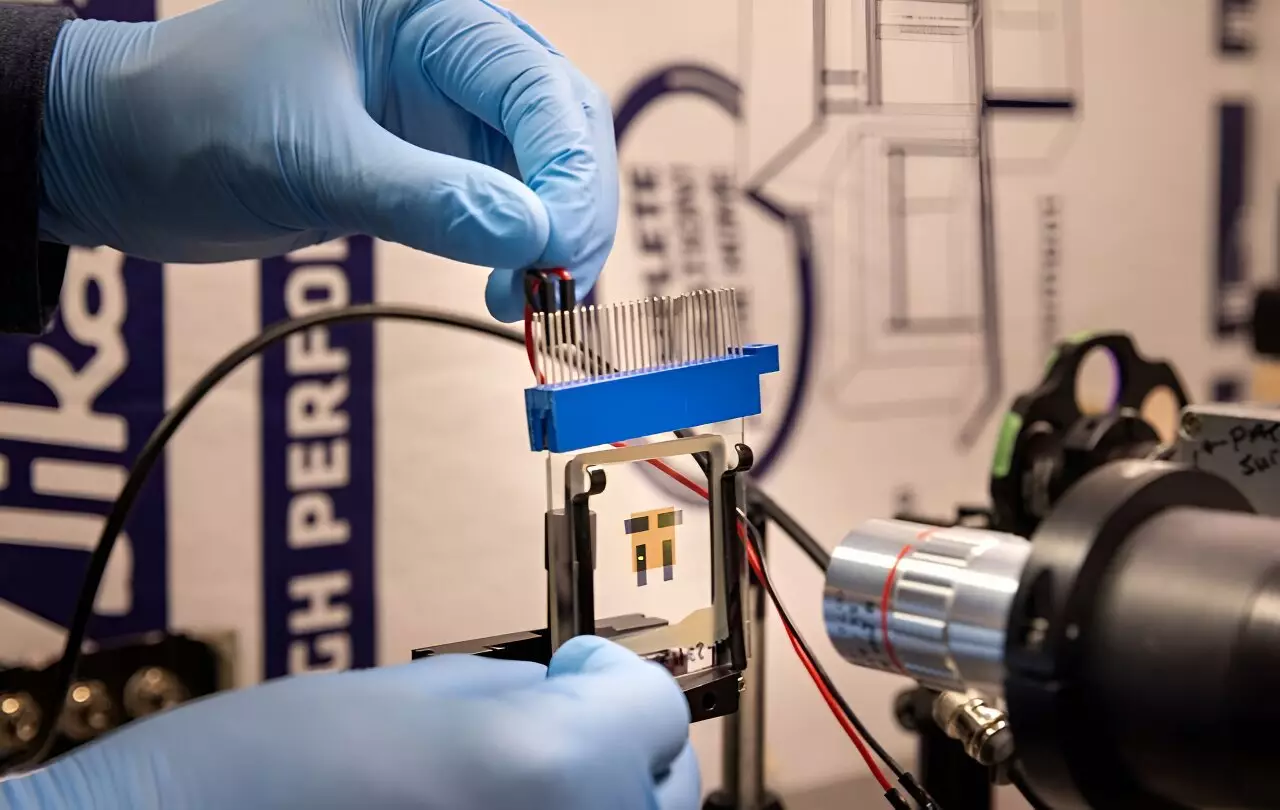Recent advances in organic light-emitting diode (OLED) technology promise to revolutionize the realm of night vision. Researchers from the University of Michigan are at the forefront of this innovation, aiming to replace traditional cumbersome night vision goggles with sleek, lightweight glasses. Published in the esteemed journal, Nature Photonics, their findings suggest that this new technology not only enhances vision in low-light conditions but also holds potential for applications in computer vision systems.
Current night vision devices are heavily reliant on image intensifiers that convert near-infrared light into a visible spectrum. This process involves a series of intricate steps: incoming light is transformed into electrons which are then accelerated through a vacuum, colliding with tiny channels to release additional electrons. This amplification process enables night vision goggles to enhance visibility by a staggering factor of 10,000. However, the substantial weight, high voltage requirements, and intricate vacuum components render these systems not only expensive but also impractical for extended use.
In contrast, the newly developed OLED technology simplifies this process significantly. It has the potential to achieve over 100 times the amplification of light, while circumventing the need for bulky components. The researchers posit that with further optimization of the OLED design, even greater levels of amplification can be realized.
One of the standout features of this novel OLED device is its remarkably compact design. The OLED stack is less than a micron in thickness, considerably thinner than a human hair, which measures around 50 microns. This miniature size not only contributes to a lightweight construction but also facilitates ease of integration into various applications.
Moreover, the device operates at significantly lower voltages than traditional systems. This reduction in power requirement could lead to enhanced battery life, thus making the technology more practical, especially in scenarios where long-term use is necessary. The innovative structure of the OLED includes a photon-absorbing layer that converts infrared light to electrons, followed by a series of OLED layers that then transform those electrons back into visible light. Ideally, for every electron, five visible light photons can be generated.
The inherent efficiency of this feedback loop enables higher light outputs from minimal input, leading to effective night vision without the downsides associated with conventional mechanisms.
Beyond enhancing night vision capabilities, this OLED device presents intriguing possibilities in the domain of computer vision. It demonstrates a peculiar memory behavior—known as hysteresis—where the light output at a given moment is influenced by past luminosity. This characteristic raises both opportunities and challenges.
In typical OLED usage, when the illuminative source is turned off, the light output ceases almost immediately. However, this advanced device has demonstrated an ability to “remember” previous light conditions, leading to potential advancements in image processing akin to the human visual system. The ability to hold onto past signals can pave the way for a more intuitive and efficient processing of visual information, potentially enabling devices to interpret images without relying on separate processing units.
Yet, this memory capability may pose challenges for conventional night vision applications, necessitating careful calibration and adaptation of the technology for specific uses.
The researchers’ choice to construct the device using readily available materials highlights the focus on practicality and scalability for future applications. This approach could effectively reduce production costs, making the technology accessible across various platforms—from consumer electronics to military applications.
The advancements in OLED technology as introduced by researchers at the University of Michigan represent a significant step forward in night vision capabilities and computer vision applications. With its lightweight design and enhanced performance, this novel technology stands on the cusp of transforming how we perceive our surroundings in low-light settings. As further developments unfold, it is expected to not only change the landscape of night vision but also enrich the interaction between machines and the visual world, mirroring the sophistication of human perception.


Leave a Reply